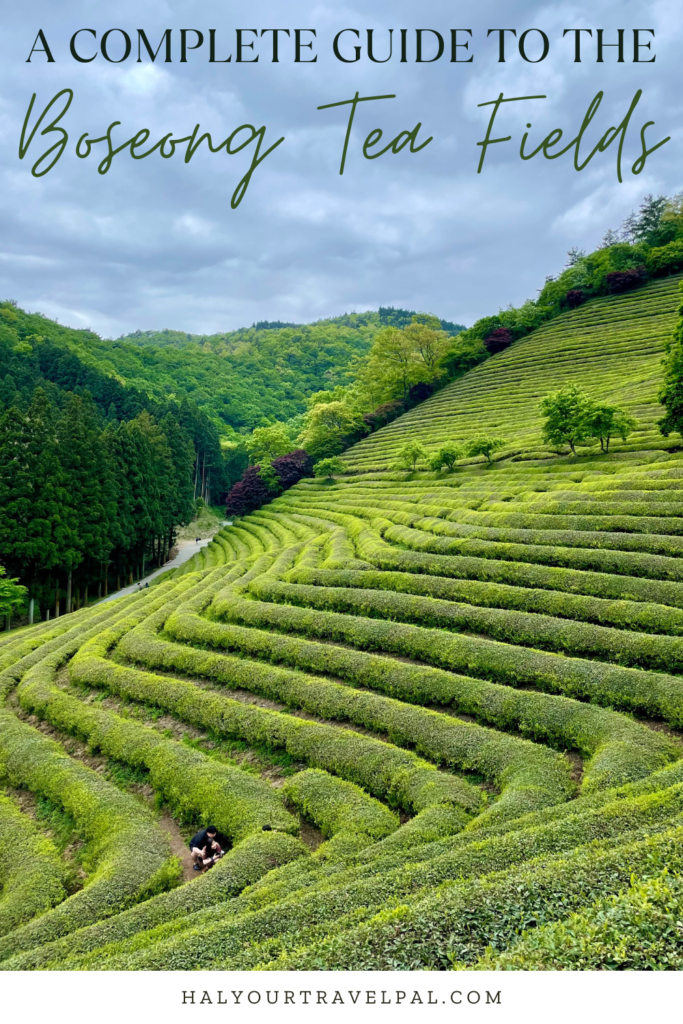
No doubt one of the most beautiful landscapes in South Korea, the Boseong Green Tea Fields are a must-see destination for nature lovers and green tea lovers. Rolling terraces of green tea bushes make for some of the most picturesque scenery in the country. You can wander through a sea of rolling green hills, try green tea delicacies, and learn about green tea production in Korea.
Boseong Green Tea Fields: Why should I go?
Boseong is a county in South Jeolla Province, South Korea famous for its green tea. Because its climate and soil are ideal for growing green tea, over 26 hectares of land are dedicated entirely to green tea production. It’s home to South Korea’s only private green tea field open to tourists, making it a popular place for anyone who wants to wander through lush greenery and try unique green tea products and delicious treats. It’s one of the most picturesque sights in South Korea, with CNN naming it one of the top 50 places to visit in Korea and one of the 31 beautiful sights on the planet!

Boseong Green Tea Fields: When should I go?
Boseong’s green tea fields are typically green year-round, making it a great destination any time of year. However, most harvesting happens in the summer, so the bushes can look a little more bare during that time. Summer is also a brutal time to be outside in South Korea because of the weather, so maybe save this one for another season if possible!
There are two festivals held in Boseong each year that can be great additions to your trip. The Boseong Green Tea Festival takes place every May to celebrate Boseong green tea. There are performances, special green tea delicacies, and green tea experiences and activities.
From November to January, Boseong hosts a Tea Plantation Light Festival, one of the biggest winter festivals in the southern region of Korea. LED lights take over the tea fields, turning them into a spectacular winter wonderland.
The Boseong Tea Plantation Light Festival is one of the top things to do in Korea in winter!
Boseong Green Tea Fields: How to get there
From Seoul, you can take a direct bus from Central City Terminal to Boseong Terminal. It takes about 5.5 hours and departs at 3:10 pm every day with an additional 8:40 am departure on weekends. There is no direct fast train, but you can take a KTX from Seoul Station to Gwangju Station to transfer to a slow train or Suncheon Station to transfer to a bus. If your transfers are efficient, it takes about 4 hours.
From Busan, you can take a bus from Busan Sasang Terminal to Boseong Terminal. There are 4 departures a day and it takes about 4 hours. There’s also a once-a-day slow train from Busan Station to Boseong Station that takes 3.5 hours.
Once you reach Boseong Terminal or Boseong Station, you’ll want to catch a local bus or taxi (15 minutes) to the tea fields. Boseong is quite rural, so taxis are the most efficient way to get around.
Where to go: Daehan Dawon Tea Plantation
While there are many green tea fields in Boseong, the main one is the Daehan Dawon Tea Plantation (대한다원). Thousands of rows of lush green tea bushes line the rolling hillside, creating scenic waves of green. The fields are more like terraces because they’re set on a sloping hillside, allowing for some amazing views and perspectives as you walk around. It’s so picturesque that many K-drams have been filmed there, including Summer Scent, Legend of the Blue Sea, and The Rebel.
When you arrive at Daehan Dawon, you’ll pass through the ticket office where tickets are ₩4000. Make sure to pick up a map so you can make sure to hit all the major spots. You’ll walk along the peaceful Cedar Road to the Main Square, where there is a teahouse, souvenir shop, and cafeteria. The cafeteria serves the famous green tea soft-serve ice cream, which is a must-try!
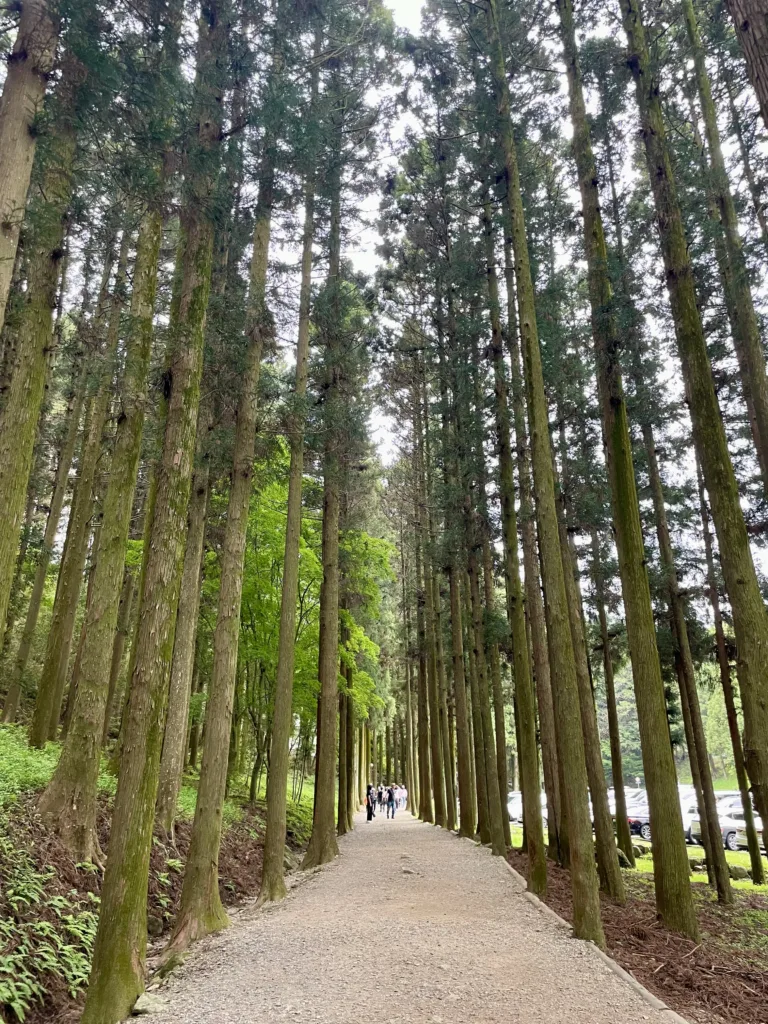
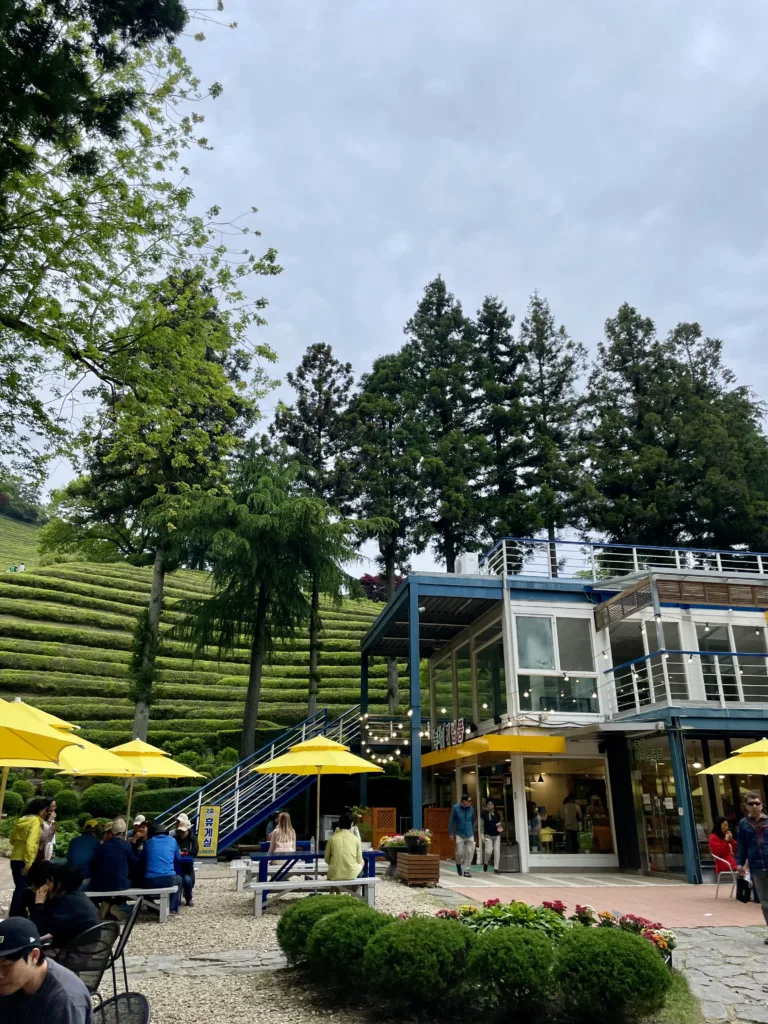
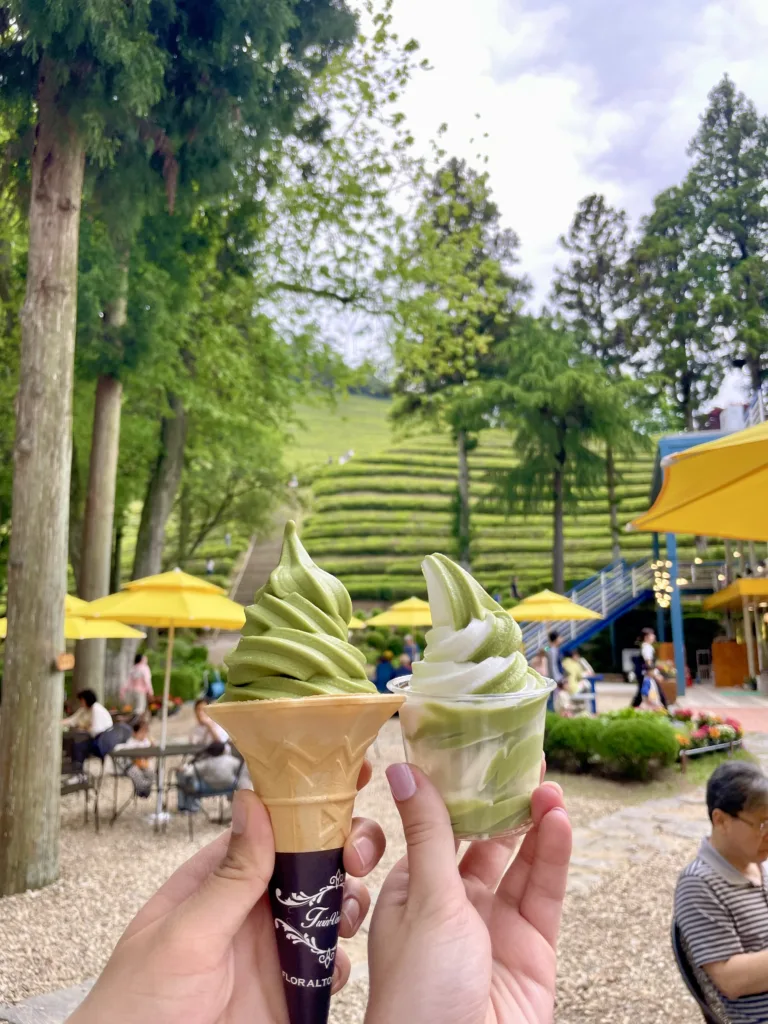
Near the Main Square are groves of over 3 million trees, including cedar, juniper, ginkgo, chestnut, cypress, maple, camellias, and more. The bamboo forest is especially unique and beautiful. If you have the time, they’re a lovely addition to the green tea fields.
From there, you can wander through the fields’ many walking paths. Once you walk up the initial steps, I recommend continuing right and making the loop around the fields. It’s an uphill walk to the observatories at the top, but the views are worth it. As you wander farther uphill, there are fewer people and the views get better.
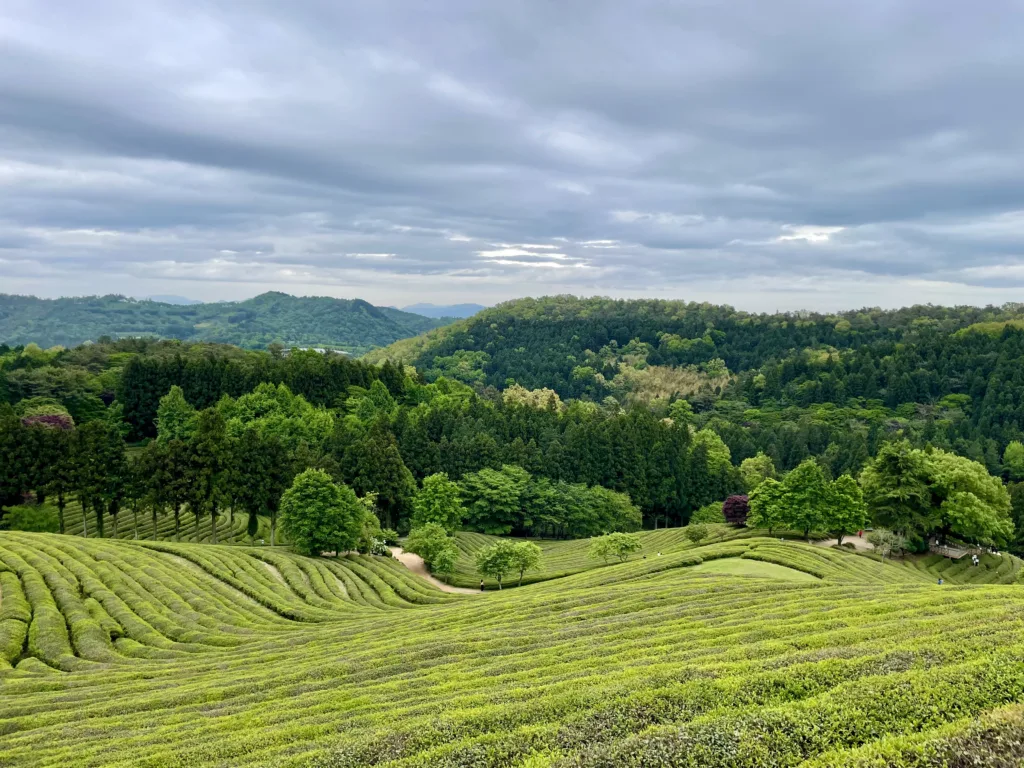
Expect to spend about 1.5-2 hours at Daehan Dawon. If you have time after your visit, you can cross the parking lot to the nearby Tea Museum of Korea to learn more about green tea production in Korea. There are tea exhibits, an observation tower, and a traditional tea ceremony that you can participate in. Entrance is only ₩1000, with an additional ₩2000 for the tea ceremony.
The Boseong Green Tea Fields are a beautiful and delicious addition to your Korea travels, no matter what time of year. Although they’re out of the way from the major cities of Seoul and Busan, you won’t regret making the journey for the stunning scenery that awaits you. Don’t forget to grab some green tea ice cream while you’re there!
Keep reading:
- 10 best day trips from Busan
- Busan itinerary: 2, 3, or 4 days in South Korea’s coastal gem
- 16 best things to do in Busan, South Korea
- 31 unmissable things to do in spring in Korea
- 25 unmissable things to do in Korea in winter
- Best things to do in Jeonju, South Korea
- 22 best things to do in summer in Korea
- 2 week South Korea itinerary & travel guide from a local
- South Korea Solo Travel Guide: Safety, tips, & what to expect
- Seoul itinerary: Local’s guide to 1 week or less
- 20 best things to do in Seoul, South Korea
- 15 unique things to do in Seoul: An unreplicable bucket list

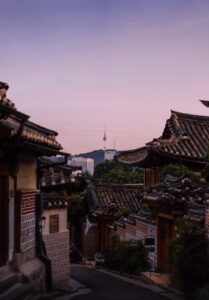
Leave a Reply